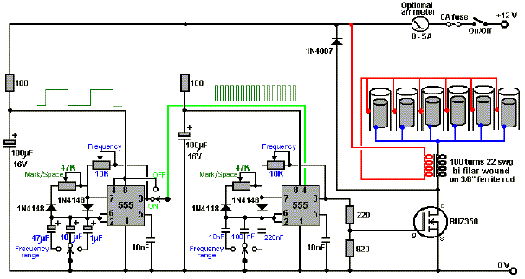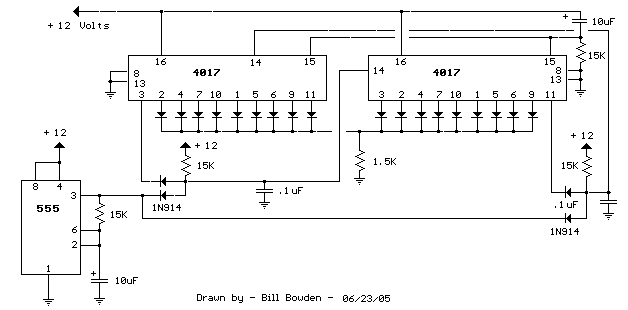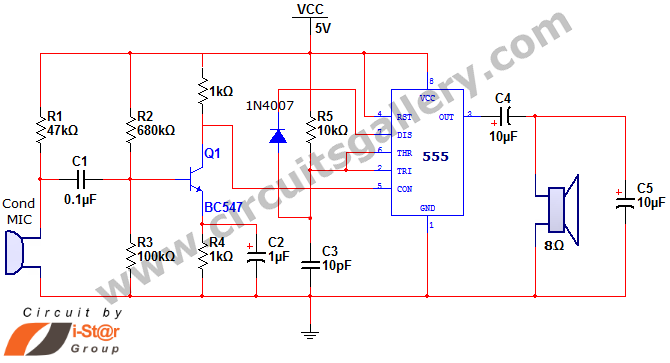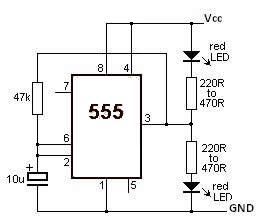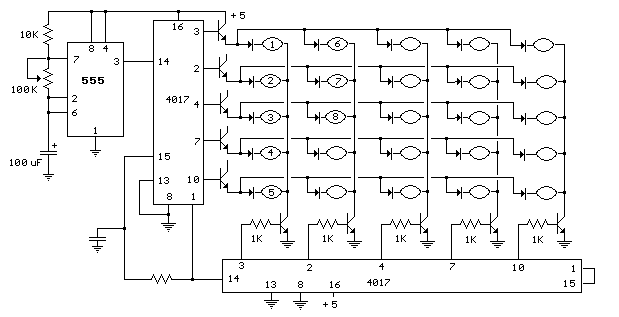
Headlights Timer
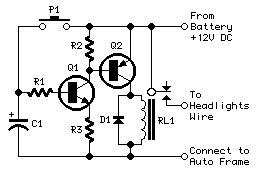
This device is a simple timer, allowing to keep on the headlights of your vehicle for about 1min. and 30sec., e.g. when accessing some dark place, without the necessity of coming back to switch-off the lights.
The circuit design for this timer system utilizes a combination of resistors, capacitors, and a timer IC, such as the NE555, to achieve the desired delay for the vehicle's headlights. The NE555 timer can be configured in monostable mode, where it produces a single output pulse when triggered.
The primary components of the circuit include:
1. **NE555 Timer IC**: This serves as the core of the timer circuit. It is responsible for generating the time delay based on external resistor and capacitor values.
2. **Resistor (R1)**: This resistor sets the charging rate of the timing capacitor. The value of R1, in conjunction with the timing capacitor, determines the length of the delay. A typical value might range from 10kΩ to 100kΩ.
3. **Capacitor (C1)**: This capacitor works with the resistor to create the time constant for the delay. A capacitor value of around 100µF to 470µF is commonly used, depending on the desired timing duration.
4. **Trigger Input**: A momentary switch can be used to trigger the timer. When the switch is pressed, it sends a low signal to the trigger pin of the NE555, initiating the timing cycle.
5. **Output Control**: The output pin of the NE555 can be connected to a relay or a transistor that controls the power to the vehicle's headlights. This allows the headlights to remain on for the specified duration after the trigger is activated.
6. **Power Supply**: The circuit is powered by the vehicle's battery, typically 12V. Proper voltage regulation may be necessary to ensure stable operation of the timer IC.
The timing duration can be calculated using the formula:
\[ T = 1.1 \times R1 \times C1 \]
Where T is the time in seconds, R1 is in ohms, and C1 is in farads. For a delay of 1 minute and 30 seconds (90 seconds), appropriate values for R1 and C1 can be selected to meet this requirement.
This timer circuit enhances convenience and safety by allowing the vehicle's headlights to remain illuminated while the driver is away, particularly in dark environments. Proper layout and consideration of component ratings will ensure reliable operation in automotive conditions.This device is a simple timer, allowing to keep on the headlights of your vehicle for about 1min. and 30sec., e.g. when accessing some dark place, without the necessity of coming back to switch-off the lights. 🔗 External reference
The circuit design for this timer system utilizes a combination of resistors, capacitors, and a timer IC, such as the NE555, to achieve the desired delay for the vehicle's headlights. The NE555 timer can be configured in monostable mode, where it produces a single output pulse when triggered.
The primary components of the circuit include:
1. **NE555 Timer IC**: This serves as the core of the timer circuit. It is responsible for generating the time delay based on external resistor and capacitor values.
2. **Resistor (R1)**: This resistor sets the charging rate of the timing capacitor. The value of R1, in conjunction with the timing capacitor, determines the length of the delay. A typical value might range from 10kΩ to 100kΩ.
3. **Capacitor (C1)**: This capacitor works with the resistor to create the time constant for the delay. A capacitor value of around 100µF to 470µF is commonly used, depending on the desired timing duration.
4. **Trigger Input**: A momentary switch can be used to trigger the timer. When the switch is pressed, it sends a low signal to the trigger pin of the NE555, initiating the timing cycle.
5. **Output Control**: The output pin of the NE555 can be connected to a relay or a transistor that controls the power to the vehicle's headlights. This allows the headlights to remain on for the specified duration after the trigger is activated.
6. **Power Supply**: The circuit is powered by the vehicle's battery, typically 12V. Proper voltage regulation may be necessary to ensure stable operation of the timer IC.
The timing duration can be calculated using the formula:
\[ T = 1.1 \times R1 \times C1 \]
Where T is the time in seconds, R1 is in ohms, and C1 is in farads. For a delay of 1 minute and 30 seconds (90 seconds), appropriate values for R1 and C1 can be selected to meet this requirement.
This timer circuit enhances convenience and safety by allowing the vehicle's headlights to remain illuminated while the driver is away, particularly in dark environments. Proper layout and consideration of component ratings will ensure reliable operation in automotive conditions.This device is a simple timer, allowing to keep on the headlights of your vehicle for about 1min. and 30sec., e.g. when accessing some dark place, without the necessity of coming back to switch-off the lights. 🔗 External reference
Warning: include(partials/cookie-banner.php): Failed to open stream: Permission denied in /var/www/html/nextgr/view-circuit.php on line 713
Warning: include(): Failed opening 'partials/cookie-banner.php' for inclusion (include_path='.:/usr/share/php') in /var/www/html/nextgr/view-circuit.php on line 713
